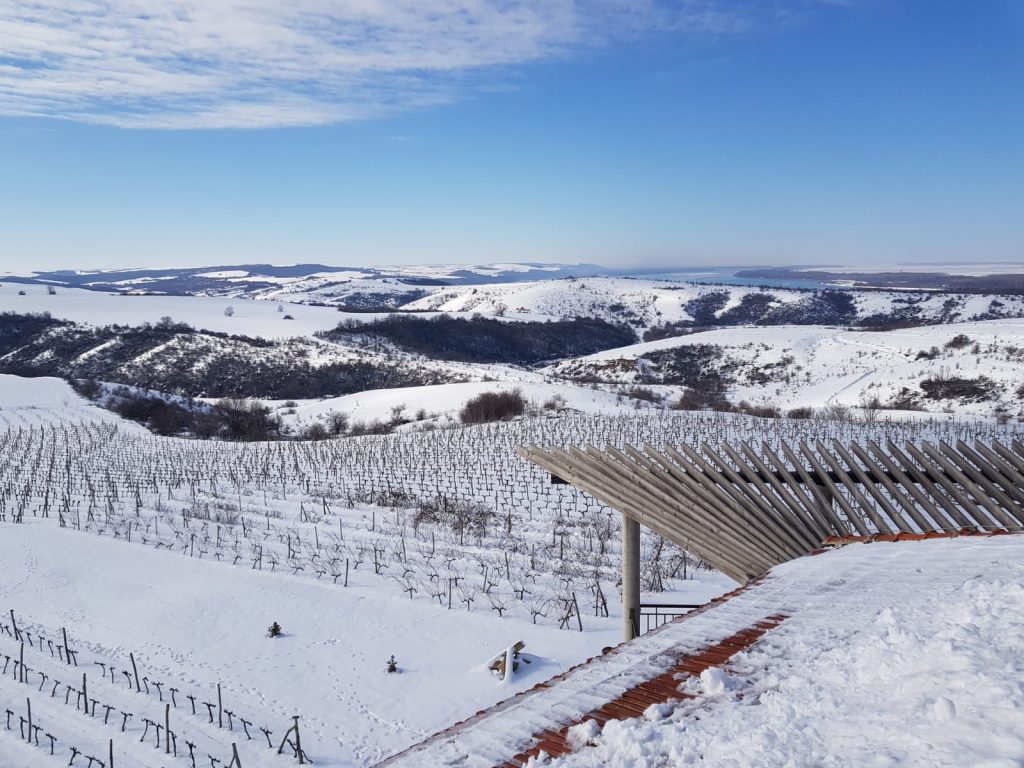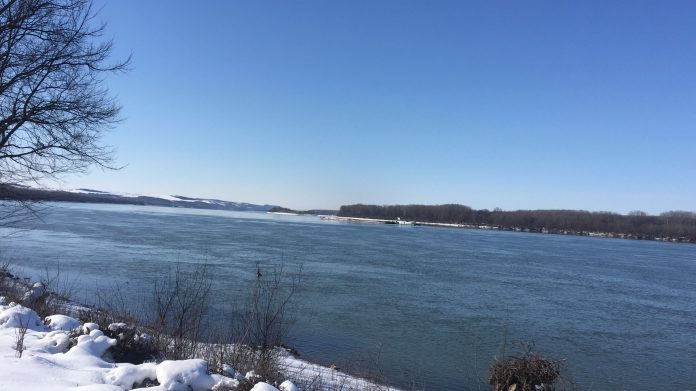Down on the Danube, on a bend in the river not far from the Bulgarian port of Ruse, a barge inches along the water at a snail’s pace.
The sun shines brightly, and the water is almost turquoise. A thick layer of snow glitters in the wintry sunlight on the Romanian and Bulgarian banks of Europe’s second-longest river.
The snow, the first this winter, is not only pretty. It has provided desperately needed water to the river where low water levels saw barges run aground and other ships blocked last month.
January 2020 was the third driest January since 1961, Roxana Bojariu, chief climatologist at the National Weather Administration told universul.net. Water levels dropped on three sections of the river, hindering ships and causing losses to freight shipping companies.
But February is proving a little wetter. Recent snowfall in Romania and northern Bulgaria, and rain in the Black Forest where the Danube begins its journey have raised water levels along the river, Bojariu said
“It’s back to average levels, and that’s a good thing,” she said.
The Danube, which flows for 1,777 miles, is Europe’s most popular river cruise itinerary, passing through eight countries. It’s also a major route for east European grain exports to west Europe.
In recent years, it has been hit by prolonged drought, which has affected navigation, hurting trade and tourism.
“It didn’t rain that much last year and at the end of the season, when we have German tourists who visit us for a glass of wine and cheese, the water was too low for their ship to dock at Ruse,” said Anna Kalomenska, who works at Seven Generations winery, a favorite stop-off point for tourists on Danube cruises, in the Bulgarian village of Mechka.
The Upper Danube, which is the most popular river boat destination in Europe, has been especially plagued by low water issues in recent years particularly the area between Passau and Regensburg in Germany.
River Cruise Advisor In 2018, the Danube was so low that many cruise ships terminated their journeys in Passau, Germany.
It’s not the time of year for river cruises, but just last month, a Ukrainian convoy of barges got stuck in Bulgarian waters near the southern Romanian town of Zimnicea, blocking navigation along that stretch of the Danube. The Lower Danube forms much of the border between Romania and Bulgaria.
Near the Romanian port of Calafat, a ship went to ground on a sandbank and small islands appeared in the middle of the river as the water levels were so low. Normally the small islands appear in July and August when temperatures are high, but it’s unusual to see them in January.
A week ago, the Danube’s water flow rate at the point it enters Romania was just 2,700 cubic meters a second, about half the normal volume for this time of year.
But hydrologists said it had risen to 5,800 cubic meters a second on Monday, above the monthly average after rain in Germany and recent snow. The Danube it seems, is a river that recovers quickly.
“The water has been rising this week and slowly, slowly it will get back to normal,” Aurelian Popoiu, of Navrom river transport company in the port of Galati told universul.net.
It’s a different picture from later January when a Serbian barge loaded with metal products ran aground on a sandbank near Calafat and Navrom general manager Stefan Dumitru told Pro-TV the situation was “critical in Hungary and we are partially blocked in Vienna, due to low water levels.”
But any way you look at it, the weather and the seasons have become unpredictable.
Seven Generations winery manager, Silvia Gavrilova, said: “It’s the 7th of February and it’s snowing for the first time. It usually snows at the beginning of December or January, but it was 20 C in January, which is unusual.”
“Still, the (warm) weather is good for tourists.”




















